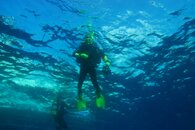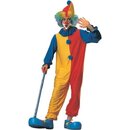A. For murky, turbid water of low visibility (rivers, harbors, etc.)
1. With natural illumination:
a. Fluorescent yellow, orange, and red.
b. Regular yellow, orange, and white.
2. With incandescent illumination:
a. Fluorescent and regular yellow, orange, red and white.
3. With a mercury light source:
a. Fluorescent yellow-green and yellow-orange.
b. Regular yellow and white.
B. For moderately turbid water (sounds, bays, coastal water).
1. With natural illumination or incandescent light source:
a. Any fluorescent in the yellows, oranges, and reds.
b. Regular yellow, orange, and white.
2. With a mercury light source:
a. Fluorescent yellow-green and yellow-orange.
b. Regular yellow and white.
C. For clear water (southern water, deep water off shore, etc.).
1. With any type of illumination fluorescent paints are superior.
a. With long viewing distances, fluorescent green and yellow-green.
b. With short viewing distances, fluorescent orange is excellent.
2. With natural illumination:
a. Fluorescent paints.
b. Regular yellow, orange, and white.
3. With incandescent light source:
a. Fluorescent paints.
b. Regular yellow, orange, and white.
4. With a mercury light source:
a. Fluorescent paints.
b. Regular yellow, white.
The most difficult colors at the limits of visibility with a water background
are dark colors such as gray or black.





